Rare broadside battle plan of the Battle of Bunker Hill, including a valuable letterpress account of the battle written by General John Burgoyne.
Sayer & Bennett's plan is the first large scale plan of the battle. The plan depicts the entire Charlestown peninsula, Boston proper, and parts of Cambridge and Somerville. The American redoubt on Breed's Hill and the famous "rail fence" extending downhill to the Mystic River are detailed, along with the British landing points, direction of advance, and vessels at the mouth of the Charles River providing artillery support. The plan shows well the difficulty the Americans faced in moving reinforcements to the battle, as relieving troops had to cross Charlestown Neck and traverse hundreds of yards of highly-exposed terrain.
Perhaps the most interesting element of the plan is the small note just west of Charlestown Neck reading "Hither the Ships ought to have come." This reflects General Clinton's recommendation for a landing at Charlestown Neck, which would have trapped the American troops on the Charlestown Peninsula and enabled the British to starve them out. An over-confident General Howe overruled Clinton, and the bloody frontal assault that ensued.
The battle of Bunker Hill, fought in Charlestown on June 17, 1775, was the first significant conflict of the Revolution, following the initial hostilities at Lexington and Concord. If those first encounters furnished the colonists with impetus to mobilize against Great Britain, Bunker Hill rallied them and demonstrated to the British government that they faced a determined foe. It took the astonished British almost a year before they resumed the offensive against the rebelling colonists.
The battle occurred after the Americans fortified Breed's Hill on the Charlestown Peninsula, which was frequently confused with Bunker Hill just to the northwest. This gave them command of much of the Inner Harbor, the entrance to the Charles, and part of the city itself. Confident in their superiority, the British ferried troops across the Charles and attacked the American emplacement head on. The battle was horrific for both sides, and the British were stunned by the ferocity of the Americans' defense and suffered more casualties than in any other encounter of the war. Ultimately however, the raw American militia were overwhelmed by a better-trained and equipped enemy backed by artillery bombardment from three sides. Following the battle, the siege of Boston settled into a stalemate until March 1776, with the British force confined to the town and the Americans unwilling to risk an attack.
Below the map is General Burgoyne's June 25 letter to his nephew Lord Stanley, which includes an important and vivid account of the battle. "Burgoyne, always with a flair for dramatics," writes Nebenzahl, "describes the action at Bunker Hill as if he were observing a grand tournament" ( Atlas of the American Revolution, p. 43). The letter provides insight into the thinking of British officers prior to the battle, stating that it was "absolutely necessary we should make ourselves masters of these heights [around Boston] and we proposed to begin with Dorchester," a plan which was of course upended by the American occupation of Breed's Hill. Later Burgoyne describes how upon hearing word from Howe who had landed in Charlestown that he was being "hurt by musquetry from Charles-Town, though Clinton and I did not perceive it, till Howe sent us word by a boat, and desired us to set fire to the town, which was immediately done," turning Charlestown to "rubbish."
As the British prepared for battle, they were confident that the operation against the outnumbered and outgunned Americans would proceed with relative ease. A week later, it was clear from Burgoyne's letter that he at least had gained new respect for his opponents: "it was a fight for a young soldier that the longest service may not furnish again."
The combination of the informative plan and Burgoyne's vivid letter make Sayer & Bennett's plan perhaps the single most desirable map of the battle. The plan is also very rare on the market, with only a few examples appearing on the market in the past 30 years.
Robert Sayer (ca. 1724-1794) was a prominent London map publisher. Robert’s father was a lawyer, but his older brother married Mary Overton, the widow of prominent mapmaker Philip Overton and the proprietor of his shop after his death. Mary continued the business for roughly a year after her marriage and then, in early 1748, it passed to Robert. Robert became a freeman of the Stationers’ Company later that year; his first advertisement as an independent publisher was released in December.
Sayer benefited from Overton’s considerable stock, which included the plates of John Senex. In the 1750s, Sayer specialized in design books and topographical prints, as well as comic mezzotints. In 1753, he, along with John Roque, published a new edition of Thomas Read’s Small British Atlas, the first of several county atlases that Sayer would publish.
Sayer’s business continued to grow. In 1760 he moved further down Fleet Street to larger premises at 53 Fleet Street. In 1766, he acquired Thomas Jefferys’ stock when the latter went bankrupt. In 1774, he entered into a partnership with John Bennett, his former apprentice. The pair specialized in American atlases, based on the work of Jefferys. They also began publishing navigational charts in the 1780s and quickly became the largest supplier of British charts in the trade.
Bennett’s mental health declined, and the partnership ended in 1784. As Sayer aged, he relied on his employees Robert Laurie and James Whittle, who eventually succeeded him. He spent more and more time at his house in Richmond. In 1794, he died in Bath.
John Bennett (fl. 1760-d. 1787) was a London printer best known for his role in the successful partnership of Sayer & Bennett. In 1760, Bennett became a servant of Robert Sayer (ca. 1724-1794), the prominent print and map seller, and was apprenticed to him in 1765. In 1774, Bennett became a free journeyman and entered into a partnership with Sayer. They issued joint advertisements and publications. In 1777, Bennett owned 1/3 share in the business. The partnership was likely to continue fruitfully, but in 1781 Bennett began to show signs of mental illness. In 1783, he was admitted to an asylum for nine months and, in 1784, Sayer filed papers to dissolve their business partnership. Bennett died in 1787.









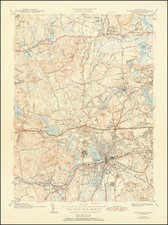
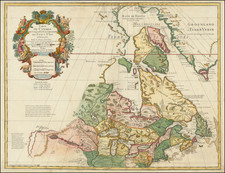
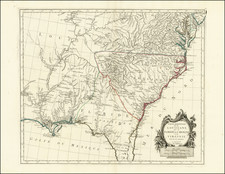
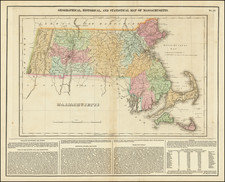
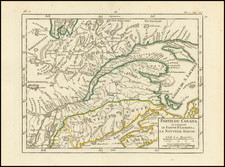
![[Portland & Cape Elizabeth to Moskito Island -- Centered on Kennebec River]](https://storage.googleapis.com/raremaps/img/small/50079.jpg)